Ningbo Gulin Vocational High School by ARCHIS Design Studio
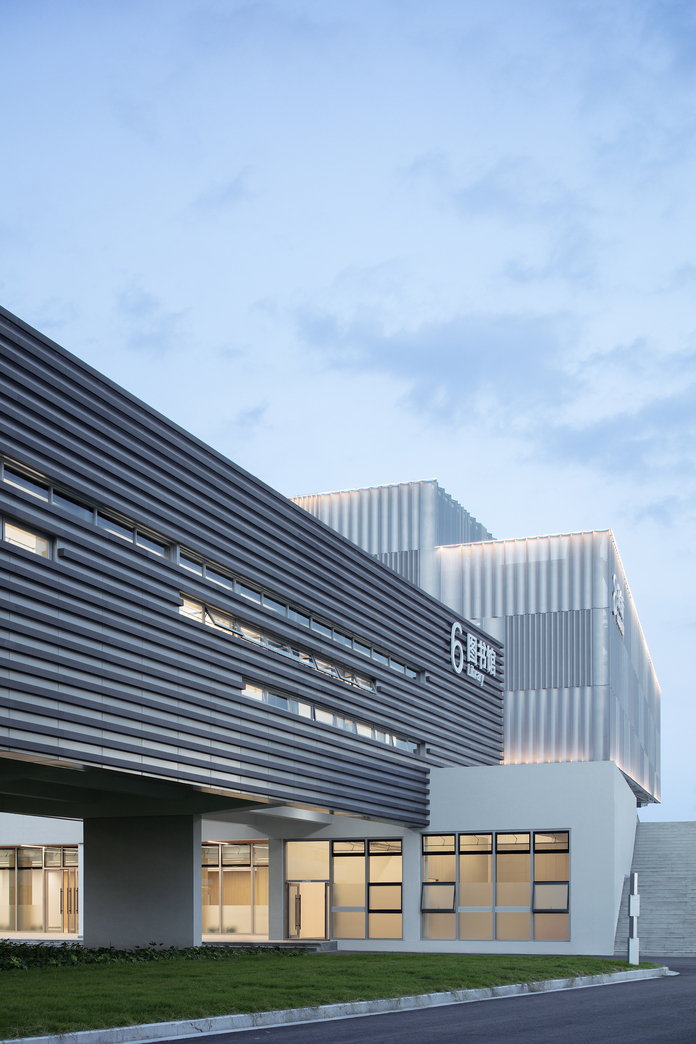
Loop Library and Auditorium (Photo Credit: Xiazhi)
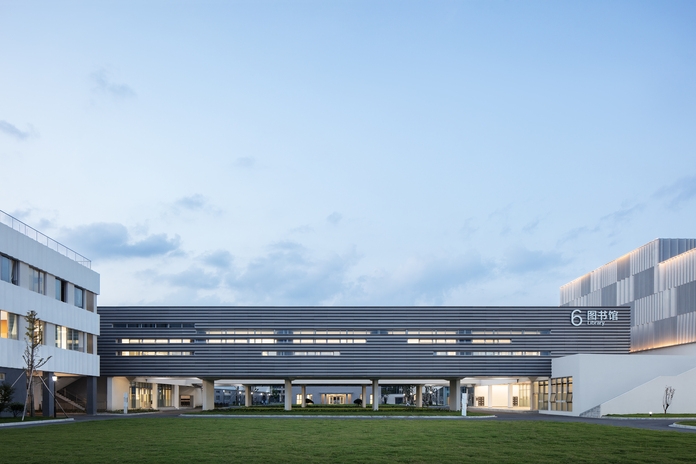
Loop Library and Auditorium (Photo Credit: Xiazhi)
Designing
The open framework of the design invites multi-authored narratives in the creation of an interactive and immersive campus. Students are the directors of their own daily encounters and plot developments on campus, devising their narratives through choosing different paths to take. Instead of imposing a preconceived coherence, the design embraces multi-authorship in the daily use of the school to stimulate the improvisational, the indeterminate, and the multiplicity of meanings.
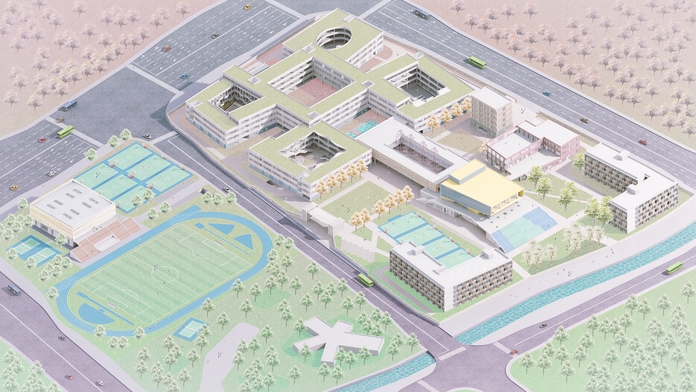
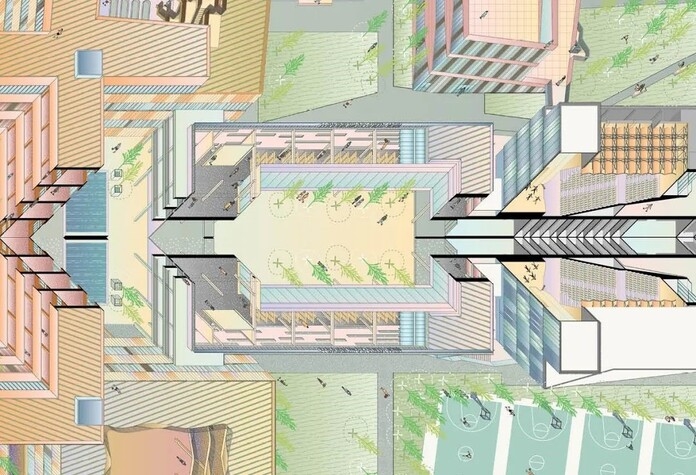
Designing a "World View" (Image: ARCHIS)
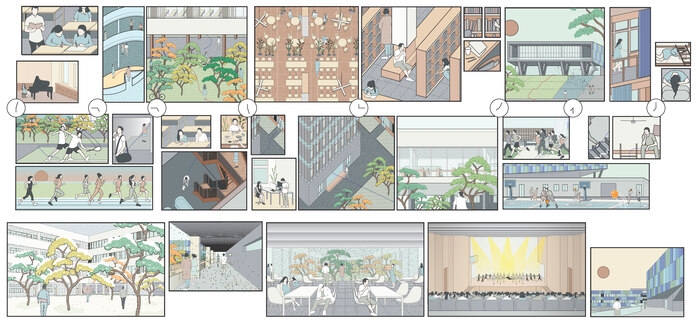
Storylines and branch developments unfold with the students' exploration and path selection. All stories are open-ended, without a predetermined beginning or ending. (Image: ARCHIS)
Image: ARCHIS
Project Overview
Ningbo Gulin Vocational High School is a new campus that accommodates 3,000 students distributed across 75 classes, spanning four specialized departments: preschool education, culinary arts, arts and crafts, and e-commerce. Situated in Ningbo's Haishu District, China, the project encompasses two distinct plots, with a combined land area of approximately 96,851 square meters.
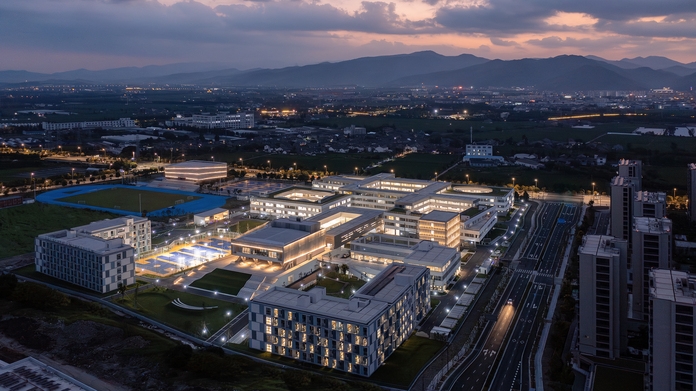
Aerial Night View (Photo Credit: Xiazhi)
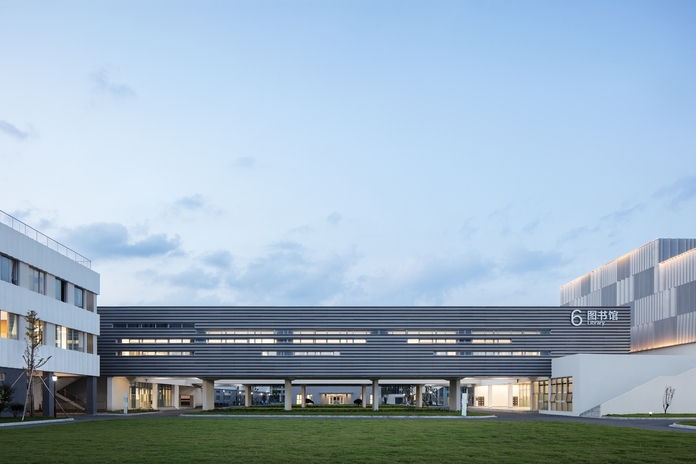
Loop Library (Photo Credit: Xiazhi)
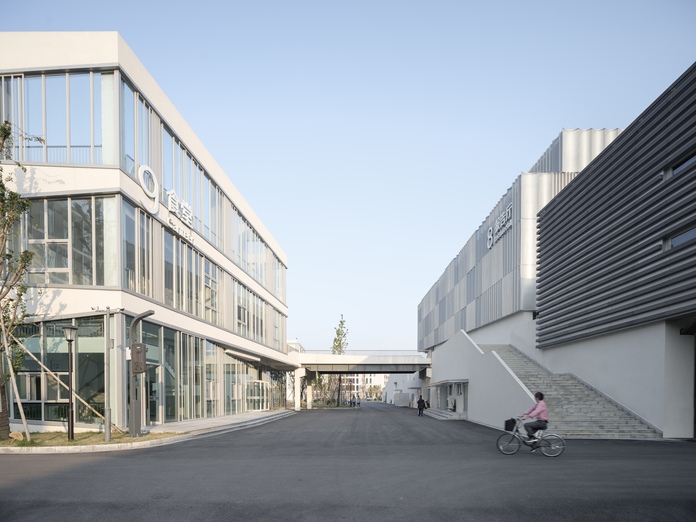
Continuous Loop System (Photo Credit: Runzi Zhu)
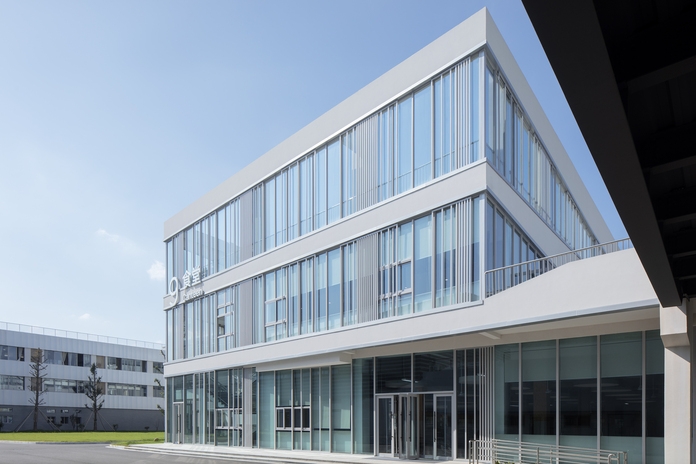
Dining Hall (Photo Credit: Xiazhi)
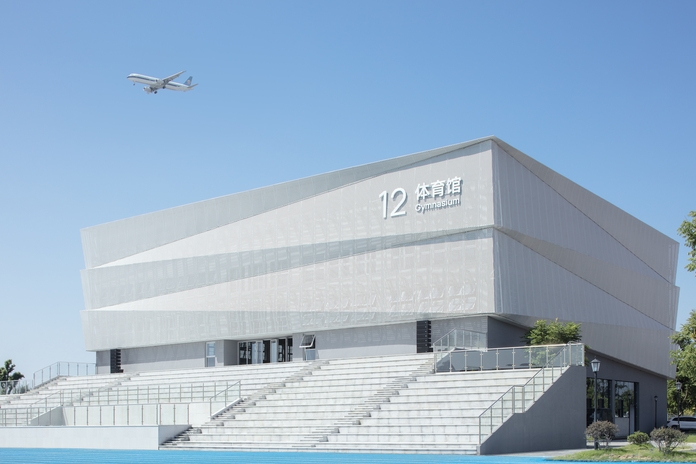
Gymnasium (Photo Credit: Xiazhi)
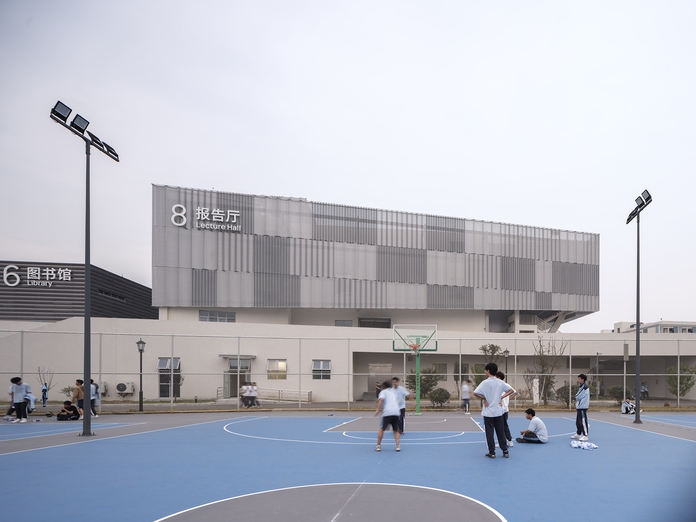
Basketball Courts (Photo Credit: Runzi Zhu)
Concept & Challenges
Designing a vocational high school presents a specific set of challenges. In contrast to the conventional classroom layout in general high schools, vocational high schools demand the building of a substantial number of vocational training rooms alongside standard classrooms. Students must navigate between various classrooms in different departments efficiently, necessitating an efficient circulation design on both horizontal and vertical levels to facilitate the intense traffic between diverse areas of specialization and functions. As the pedagogy of the school evolves, designing the school with versatility that can adapt to changing functions, ideologies, and events also becomes crucial.
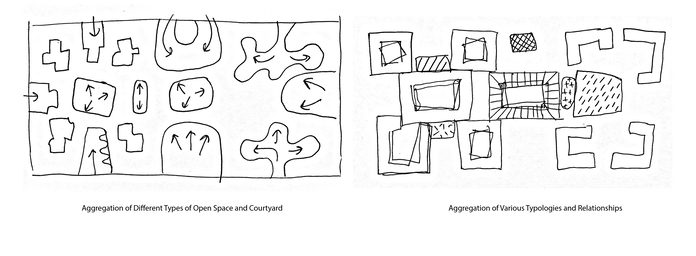
Image: ARCHIS
Mille-Feuille : Mat Urbanism and Non-Orthogonal Courtyard
Historically, school designs have adhered to similar layouts dictated by traditional pedagogical models, functional configurations, and stringent regulations governing lighting, ventilation, and acoustics. Conventional campus designs also typically entail isolated teaching units that enclose open spaces, yielding uniform spatial arrangements that hinder student interaction and communication. The traditional, mono-function campus designs cannot adapt to contemporary educational paradigms, which prioritize cross-disciplinary education, informal learning, and experiential pedagogy. Consequently, the conventional architectural approach in educational institutions falls short of accommodating the contemporary vision for education.
The project challenges the traditional notion of an efficient construction system in China, which typically follows an orthogonal 8.4m x 8.4m grid. Instead, we explored alternative spatial configurations using mat courtyard typology in a non-orthogonal grid system. This allows various programs to be interlinked in a more efficient and organic way and offer students and teachers a more convenient pedestrian experience.
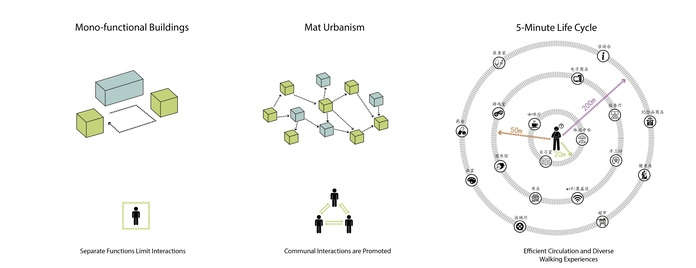
Image: ARCHIS
On the ground floor, the vocational training rooms with lower lighting requirements are placvting and views. Additionally, in between the standard classrooms and vocational training rooms, various informal teaching spaces link various departments together to foster multidisciplinary interaction.
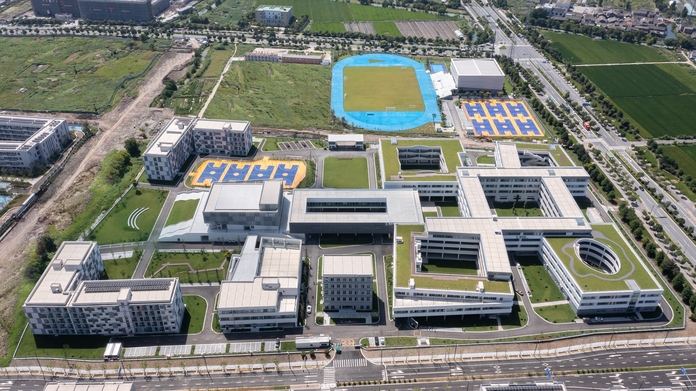
Image: ARCHIS
Aerial Perspective (Photo Credit: Xiazhi)
By introducing a twist to the conventional orthogonal grid system in the mat+courtyard typology, we integrate the building better with the site, enhancing informal educational spaces and overall lighting quality. The interconnections of the internal courtyards not only improve the efficiency of on-campus traffic but also foster interdisciplinary communication and collaboration. Furthermore, the internal courtyards within various educational spaces are marked by their unique flooring, color palettes, material choices, vertical design elements, and spaces. These elements serve as visual markers and contribute to distinct place-making spatial experiences, helping students find their way around the campus without falling into a monotonous routine.
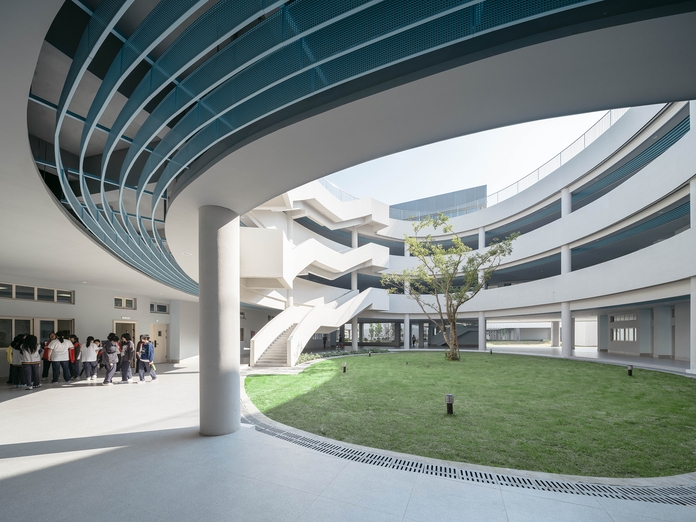
Art School Department Courtyard (Photo Credit: Runzi Zhu)
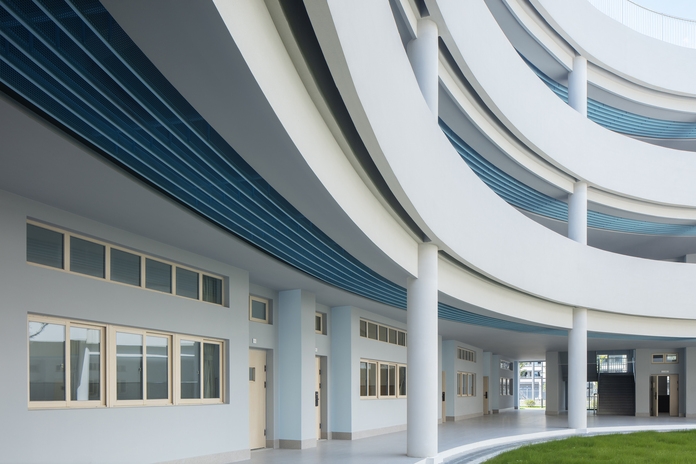
Art School Department Courtyard (Photo Credit: Xiazhi)
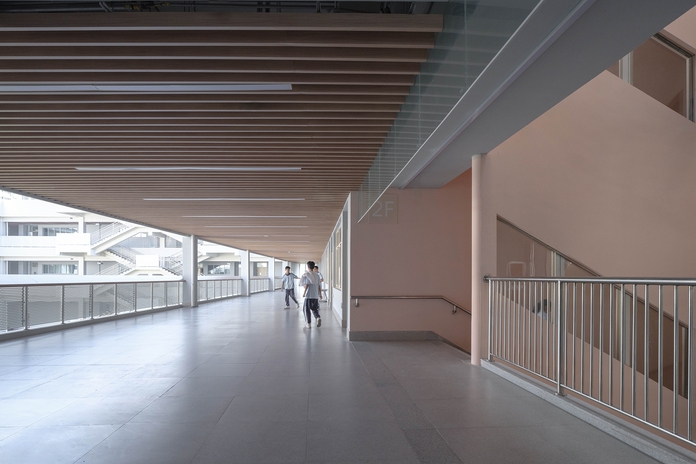
Cooking School Department Corridor (Photo Credit: Runzi Zhu)
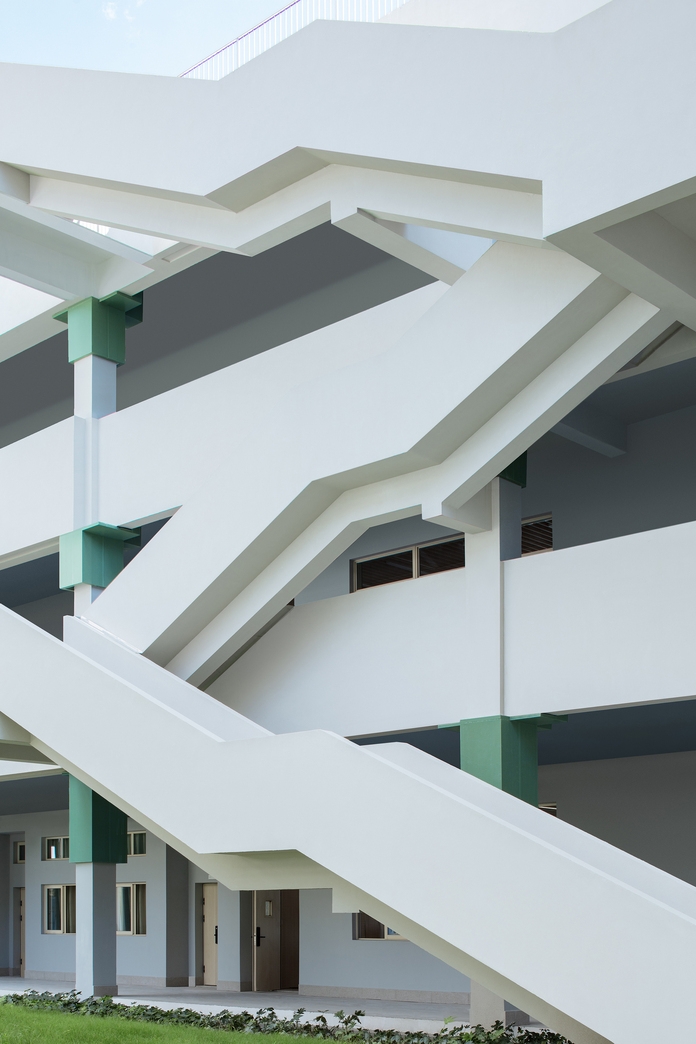
Anti-perspectival Staircase (Photo Credit: Xiazhi)
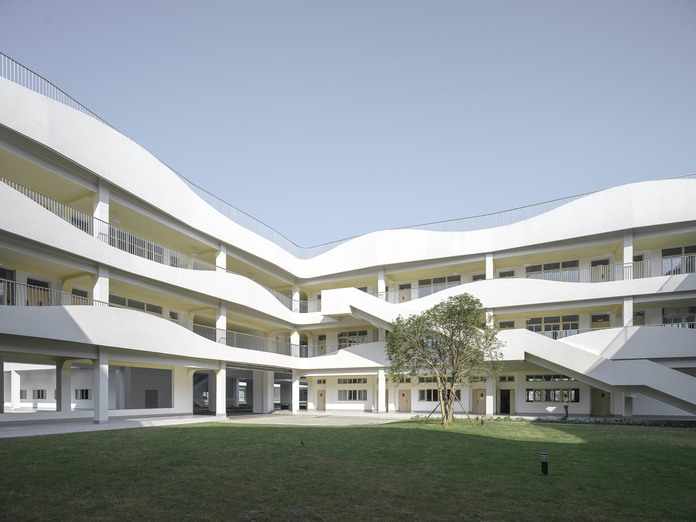
Early Education Department Courtyard (Photo Credit: Runzi Zhu)
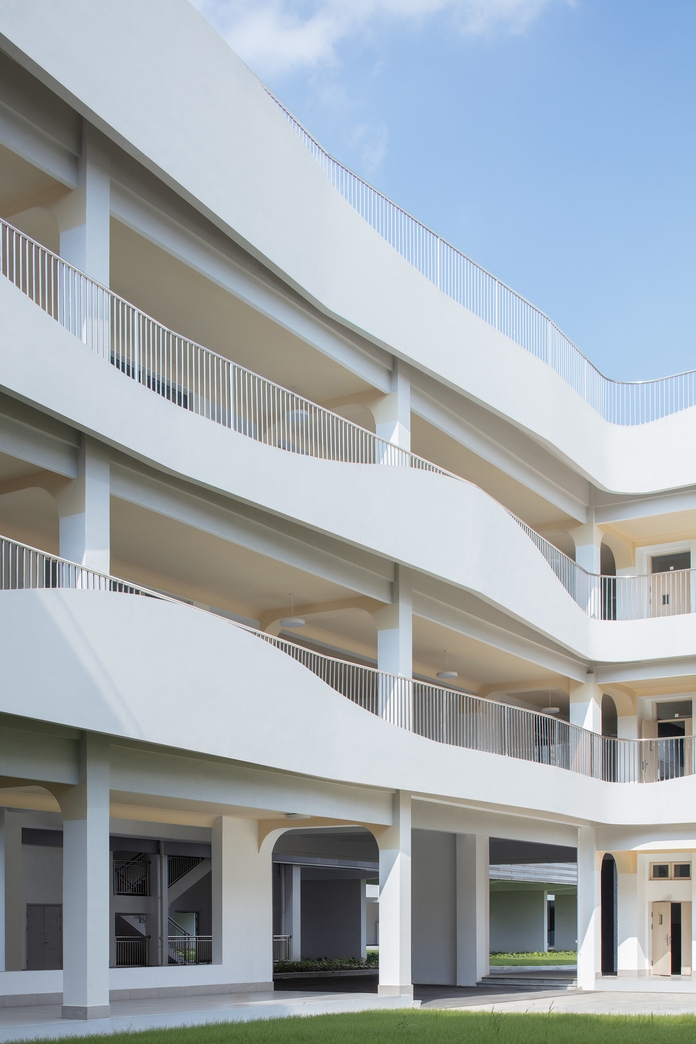
Early Education Department Courtyard (Photo Credit: Xiazhi)
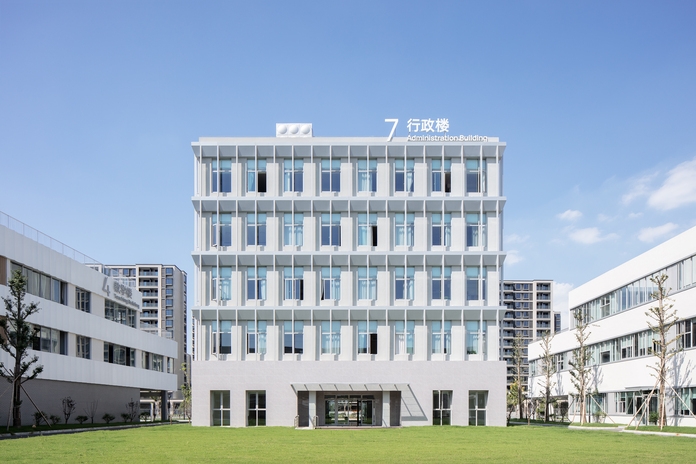
Executive Building (Photo Credit: Xiazhi)
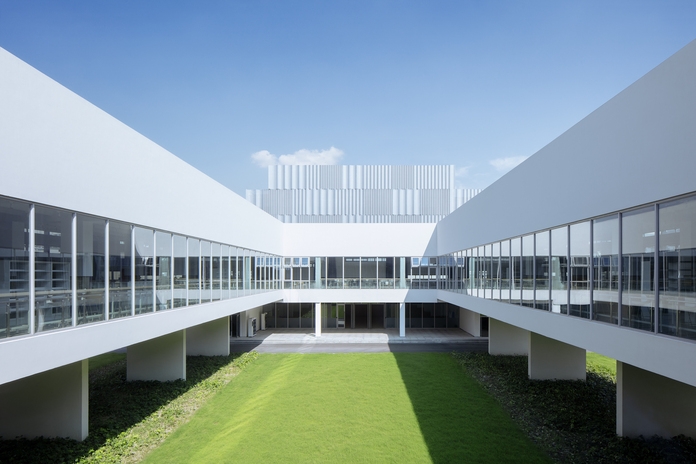
Loop Library Courtyard (Photo Credit: Xiazhi)
By creating multiple courtyards with diverse attributes and functions, the design constructs a microcosmic city that can enable a multitude of events, spaces, and stories, transforming the traditional closed teaching model into an open and engaging narrative.
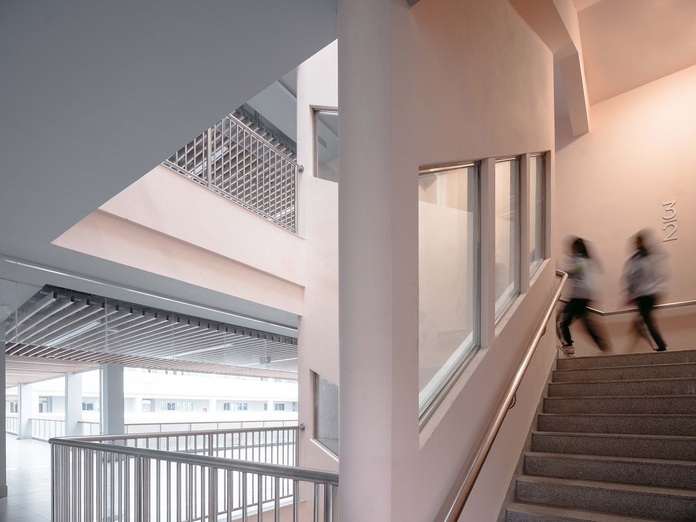
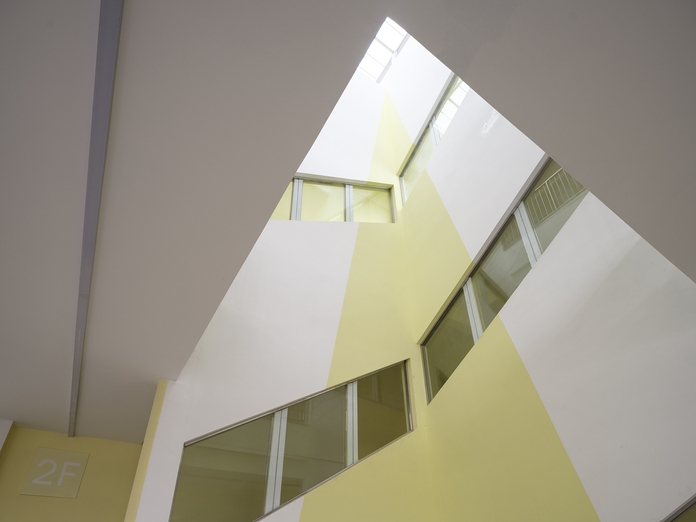
above: Cooking School Department Staircase (Photo Credit: Runzi Zhu)
below: Early Education Department Staircase (Photo Credit: Runzi Zhu)
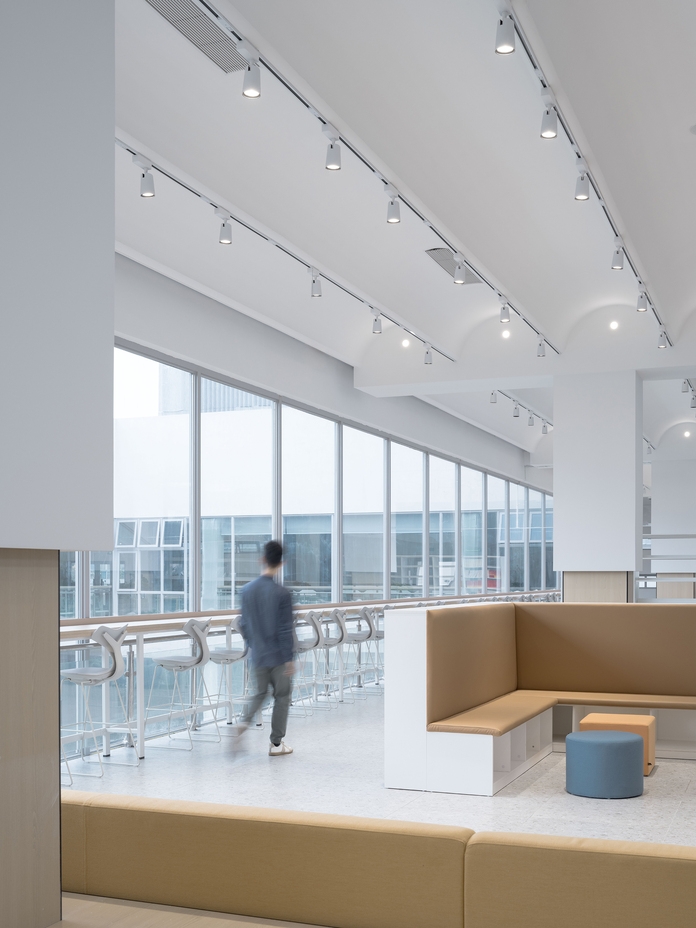
Loop Library Interior (Photo Credit: Runzi Zhu)
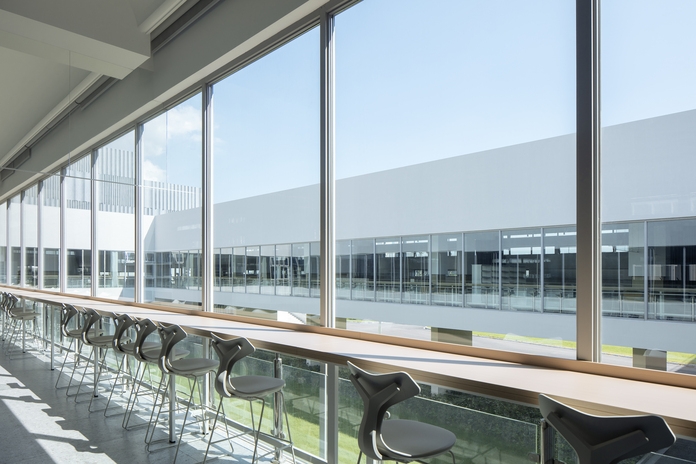
Loop Library Interior (Photo Credit: Xiazhi)
Roaming Map: Continuous Loop System
The second level of the school is interconnected through a continuous loop system, enabling covered access from the auditorium, library, and classrooms to the courtyards. Furthermore, all departments within the school are interlinked through courtyards, facilitating cross-disciplinary interactions, and ensuring efficient circulation. Various landscapes, combining water reflecting pool, rooftop gardens, and courtyard gardens, create a diverse learning environment. The continuous loop system connects indoor and outdoor spaces, ensuring all-weather accessibility and enhancing the experience for social activities and informal learning. Shared corridors and landscaped courtyards enable students to experience seasonal changes between classes.
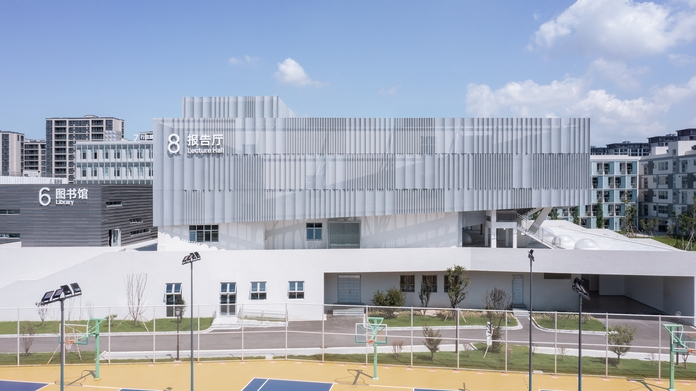
Open Theater: Public Elevated Platform and Viewing Deck (Photo Credit: Xiazhi)
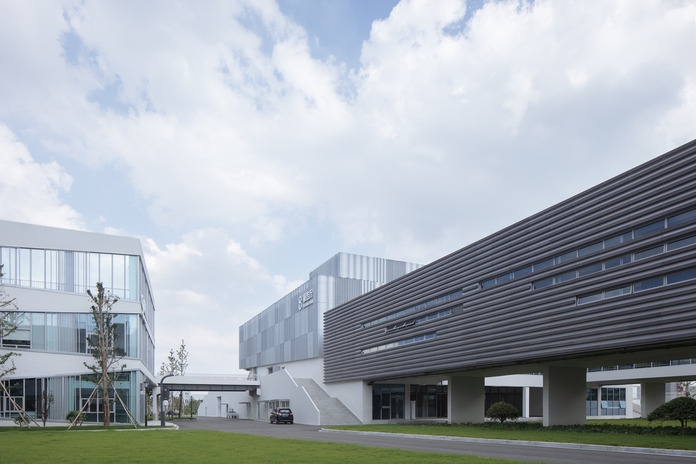
Skybridge (Photo Credit: Xiazhi)
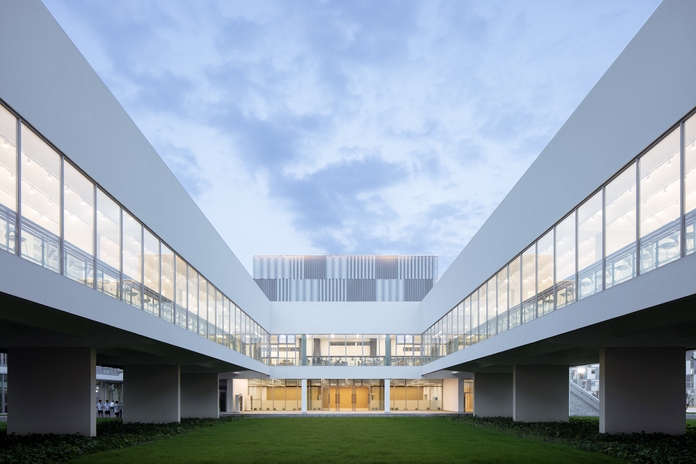
Loop Library (Photo Credit: Xiazhi)
Model and Drawings
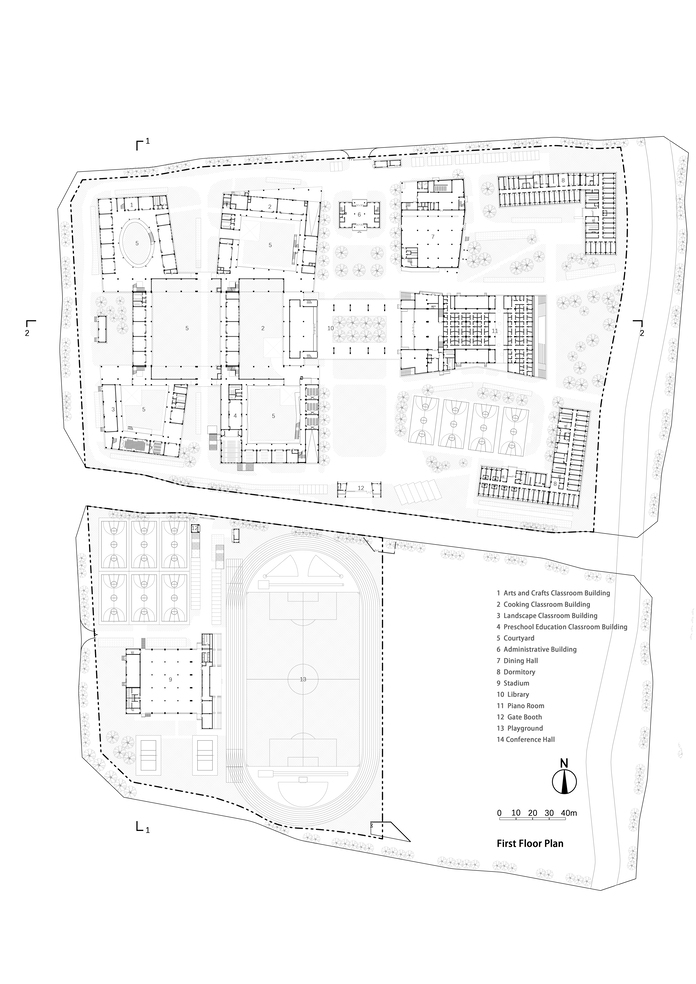
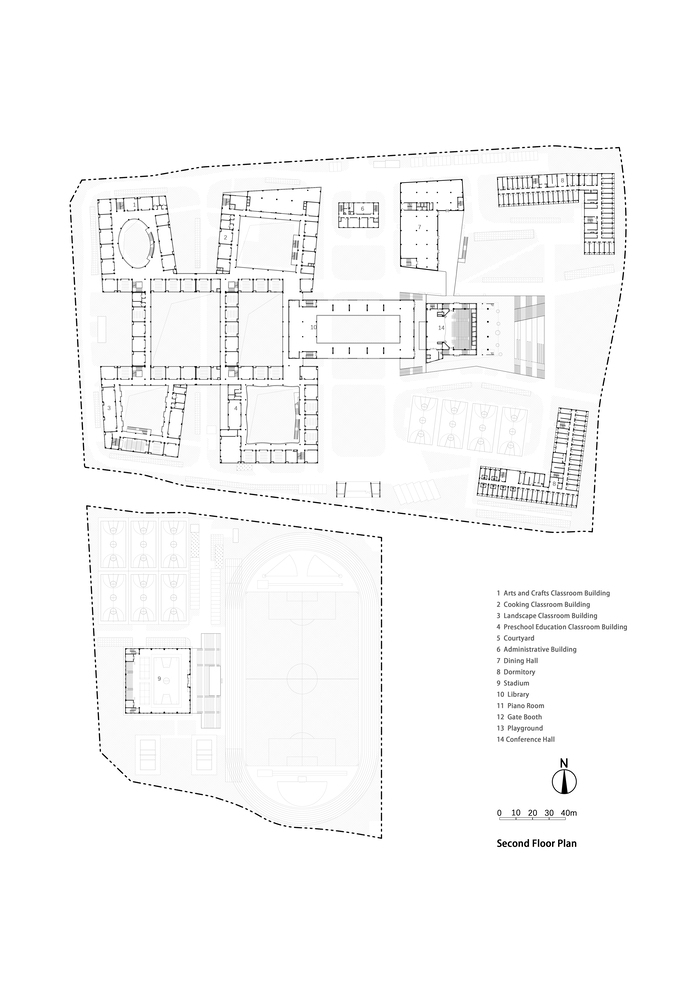
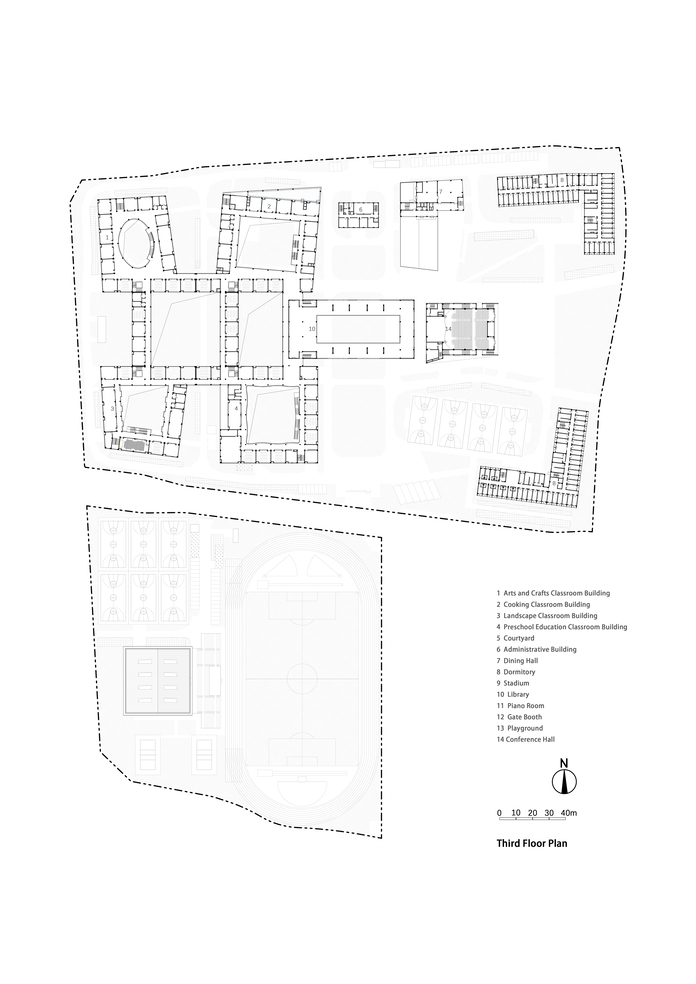
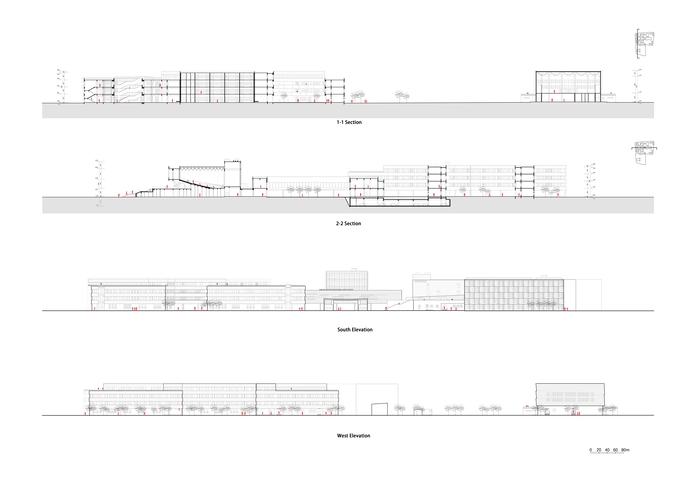
Image: ARCHIS
Project Information
Project Name: Ningbo Gulin Vocational High School
Site: Ningbo, China
Stage: Completed
Project Duration: 2020-2023
Building Area: 80,000 square meters
Site Area: 96,851 m²
Client: Ningbo Gulin Vocational High School, Ningbo Education Bureau
Programs: Library, teaching building, executive building, auditorium, dining hall, student dormitories, sports tracks and fields, sports stadium, school gate, and other supporting functions
Project Team
Architectural Design: ARCHIS Design Studio
Company Website:https://shining-christina-sun.com/
Founder and Principal Architect: Shining (Christina) Sun
Lead Design Team: Shining (Christina) Sun, Zirui (Allen) Pang, Yotam Ben-Hur, Yuzhou Peng, Yiqing Wu
Design Team: Xun Lu, Yalun Li, Guangwei Ren, Liding Fan, Jiahao Shi, Xinyao Xiao
Collaboration: Zhejiang Xinjie Construction Co., Ltd. (Hao Zhang, Liangjun Chen, Ming Luo, Yifei Pan, Xin Luo, Tianqian Zhu, Huili Liang, Linghang Li, Yuanwang Zhu)
Courtyard Corridor Co-design and Interior Design: Supercloud Studio: Xunjun Xu, Ruobei Gan, Zhibin Zhang, You You, Meng Xue, Yuqing Yang
Dormitory and Gymnasium Interior Co-design: Kangyi Shen Studio (Kangyi Shen, Zhuozhi Xiong, Xijin Zeng)
Interior Construction Drawing: Wei Chen, Liyuan He
Landscape Design: Feng Liu, Sheng Cao
Facade Consultant: Chuanxing Jiang, Jun Wang
Lighting Design Consultant: Lei Pang
Signage Design: SURE Design
Materials: Wood Grain Magnesium Carbonate Board, Corrugated Aluminum Plate, Wood Grain Perforated Aluminum Grille, Sound Absorbing Coating, Macallen Marble, Plastic Floor
Photography: Xiazhi, Runzi Zhu
Video: Black Station
LED Panel: Unilumin
Monitoring System: Dahua Technology
Video:https://youtu.be/yuXmE5cQ5P4
Shining (Christina) Sun
Founder of ARCHIS Design Studio
Doctoral candidate at Harvard University
MArch II and MAUD from Harvard
B.Arch from Cornell University
Shining's design philosophy is to create a new architectural paradigm by pushing the boundaries of divided traditional design through multidisciplinary, bottom-up, and cutting-edge design. Before establishing ARCHIS, she had practiced at internationally recognized offices, including OMA, AECOM, and Aedas. In parallel to her practice, Shining has taught at institutions such as the Central Academy of Fine Arts and Shanghai Jiao Tong University and served as a juror at esteemed academic institutions such as Harvard, Syracuse, and Cornell University.
ARCHIS is a multi-disciplinary and research-led studio working at the intersection of architecture, art, and science. Headquartered in Hangzhou and with a branch office in Boston, the office is a team of experienced researchers from Harvard and MIT and professionals from diverse international backgrounds. Since 2018, ARCHIS has been developing innovative and non-linear design approaches that support the increasing dynamism and complexity of contemporary buildings and cities. Working across a broad design spectrum, the studio's work ranges from large-scale urban planning and architecture to public art and exhibitions design. In constantly pushing the boundaries of existing temporal and spatial relationships, ARCHIS aims to produce solutions that are not formally preconceived, but rather emergent from and tailored to the particular contextual adjacencies and contingent interrelationships of each project.
